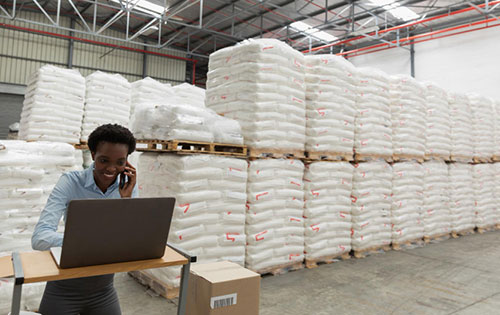Demand Planning & Forecasting in Food Manufacturing: Mastering Trends, Timing, and Technology
Built For


In the food manufacturing world, timing is everything. Whether it’s meeting holiday demand, navigating summer spikes, or aligning with harvest cycles, forecasting plays a pivotal role in keeping operations smooth and customers satisfied. For businesses producing perishable goods, even one miscalculation can result in spoilage, stockouts, or missed revenue opportunities.
That’s where demand planning and forecasting play a critical role. In an industry where timing is everything, aligning production with market demand ensures fewer disruptions, better resource allocation, and improved profitability. By leveraging inventory software, food manufacturers can stay ahead of seasonal shifts, consumer trends, and supply chain variability with greater precision and confidence.
Why Demand Planning Matters in Food Manufacturing
Unlike other industries, food manufacturers face a unique set of challenges that make accurate forecasting essential:
- Shelf-life constraints: Products must move quickly from production to consumer to ensure freshness.
- Ingredient availability: Sourcing often depends on agricultural cycles and external market factors.
- Volatile demand patterns: Consumer preferences can shift with seasons, holidays, weather, and more.
- Regulatory oversight: Compliance and traceability require detailed planning and accurate documentation.
Effective demand planning ensures that production aligns with actual market needs—minimizing waste, maximizing shelf space, and improving overall efficiency across the supply chain.
Common Seasonal Challenges: Holidays & Summer Spikes

Seasonal demand variability is a reality for food manufacturers. Success hinges on anticipating changes well before they hit. Typical demand changes include:
Holiday Demand
Holidays often create sharp demand spikes. Thanksgiving, Christmas, and other festive periods drive up sales for certain categories—from baked goods and confections to meal kits and beverages. These surges must be forecasted and prepared for months in advance.
Summer Spikes
Warm weather typically increases demand for items like frozen treats, grilling staples, and picnic-ready foods. Forecasting summer demand requires a deep understanding of regional buying patterns and historical sales data.
How Forecasting Software Supports Smarter Decisions
Manual methods like spreadsheets can’t keep up with the fast-paced, data-heavy environment of modern food manufacturing. Forecasting software—particularly when integrated with inventory and order management systems—enables manufacturers to respond more strategically to demand fluctuations.
Key Benefits of Forecasting Software:
- Historical data analysis to identify repeatable seasonal trends
- Real-time inventory visibility to inform production and purchasing
- Automated reorder alerts based on predicted demand levels
- Purchasing tools that align with supplier lead times
- Multi-location forecasting to support regional or national distribution
- Batch & lot tracking alignment for traceability and quality assurance
With the right tools, manufacturers can replace guesswork with data-driven decision-making, increasing efficiency while reducing risk.
Real-World Example: Preparing for Seasonal Demand

Consider a company that produces sauces and dips. Their busiest periods revolve around:
- Cinco de Mayo
- Memorial Day to Labor Day
- Super Bowl weekend
By analyzing historical sales data, tying demand forecasts to marketing calendars, and adjusting procurement plans early, manufacturers can avoid costly rush orders and last-minute staffing issues. Forecasting also ensures raw materials—such as tomatoes or avocados—are secured in sync with harvest and pricing cycles, further protecting margins.
Best Practices for Accurate Demand Forecasting
- Use historical data as a baseline – Start with past performance to spot trends.
- Layer in external factors – Consider weather, promotions, competitor behavior, and current events.
- Forecast by product category or SKU – Granular planning provides clearer insights.
- Segment by location – Regional demand may vary significantly.
- Review and adjust frequently – Forecasts should evolve alongside market signals.
- Connect planning with operations – Sync forecasting with procurement, production, and logistics to ensure alignment.
Stay Proactive with Technology
In today’s competitive food manufacturing landscape, reactive planning isn’t enough. Demand forecasting must be proactive, precise, and powered by technology. Software solutions help manufacturers anticipate change, stay prepared, and make smarter decisions based on real data—not assumptions.
By mastering trends, timing, and technology, food manufacturers can better navigate peak seasons, align with sourcing cycles, and deliver consistent value to both customers and retailers. Ready to take control of your demand planning? Watch an on-demand demo of Acctivate.
Call us at 817-870-1311

